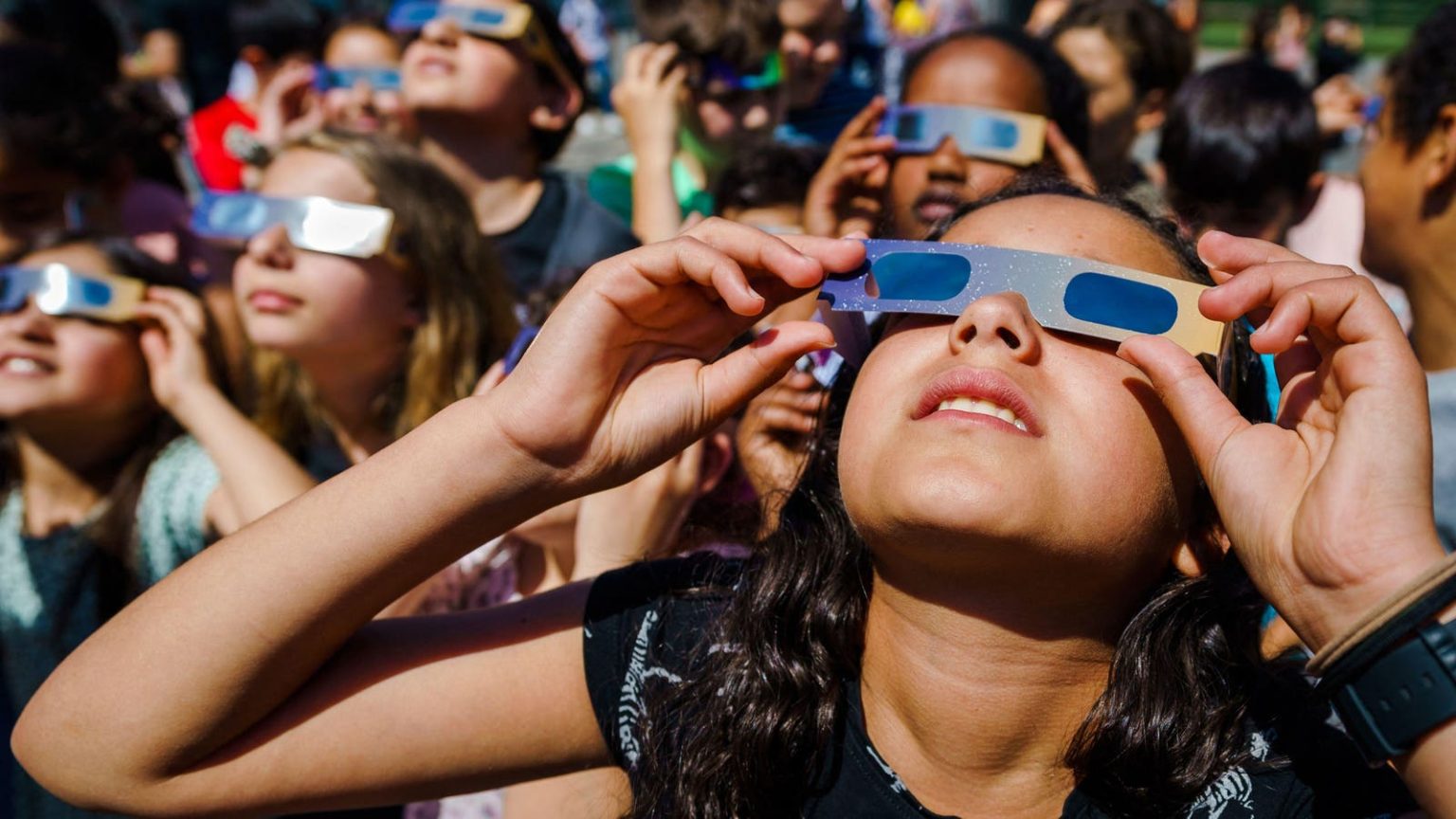A box arrived from NASA last week containing special glasses for viewing the upcoming total solar eclipse on April 8, which will move across North America. The excitement of this event brings back memories of a massive solar eclipse event organized at the University of Georgia in 2017, where tens of thousands of people gathered to learn about solar eclipses and weather. Despite not being in the path of totality this time, the upcoming eclipse is still expected to be a spectacle and a great learning opportunity.
A total solar eclipse occurs when the Moon passes between the Sun and Earth, blocking all of the Sun’s light and casting a shadow on part of the Earth as it rotates. While wearing the special glasses is crucial for viewing the eclipse safely, April’s weather transition could lead to cloudy or stormy conditions. Climatologies, such as those derived from geosynchronous satellites like GOES EAST and GOES WEST, can provide insight into the likelihood of cloud cover on the day of the eclipse, but it is important to also check local forecasts for the most accurate information.
Despite definitive forecasts circulating on social media about potential cloudy conditions on the day of the eclipse, it is crucial to remember that reliable weather predictions are limited to about two weeks in advance. Weather forecasters and scientists caution against relying on long-range weather models, as the upper limit of weather predictability is around nine or 10 days according to chaos theory. With specific predictions for any particular point in time being uncertain, it is important to approach weather forecasts with caution and take deep breaths.
Interestingly, solar eclipses can actually dissipate clouds and reduce temperatures by affecting convective cloud formation related to land surface heating. The NASA Earth Observatory notes that as the Moon blocks the Sun’s light, the convection process is reduced, leading to cloud dissipation. While clouds caused by stronger atmospheric processes may not be as affected, smaller cumulus clouds could potentially dissipate during the eclipse. Citizen scientists can contribute to understanding this phenomenon by participating in programs such as the GLOBE Eclipse Challenge: Clouds and Our Solar-Powered Earth.


